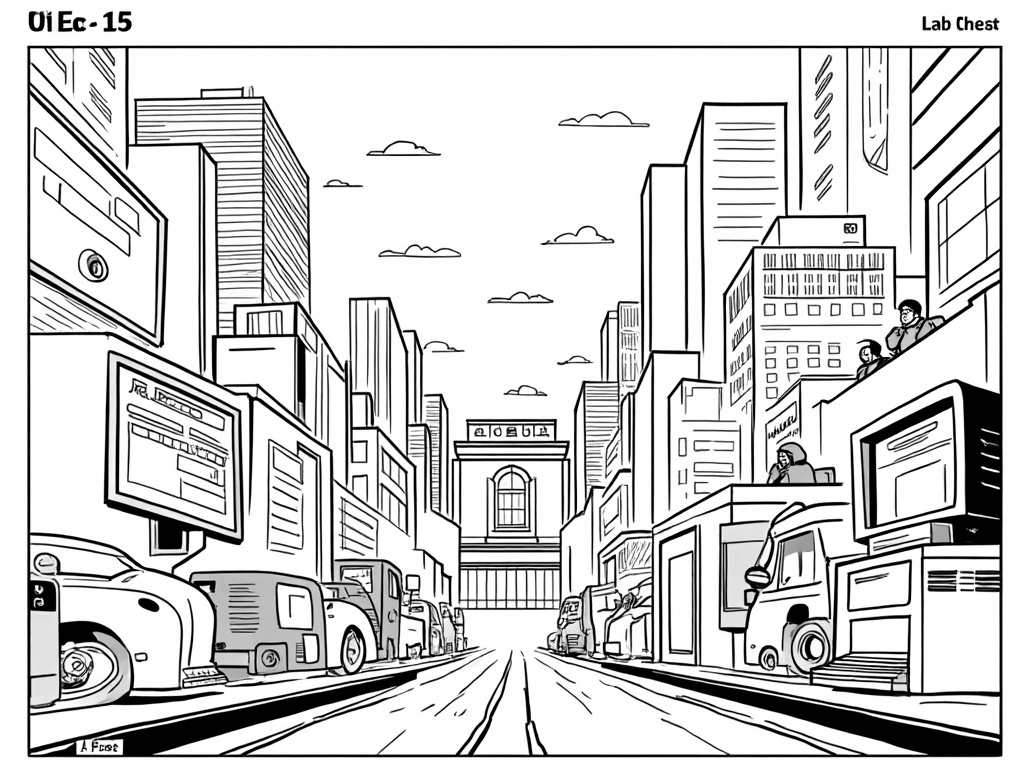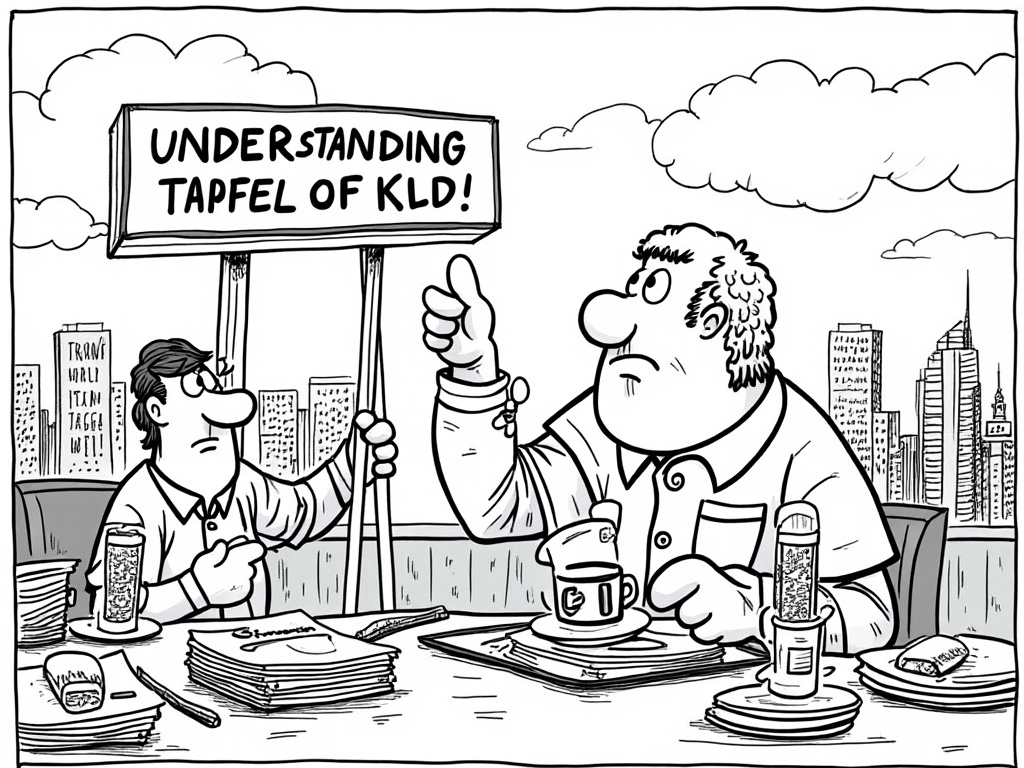
The Inflation-Interest Rates Tango: Strategic Navigation for Today’s Investors
Reading time: 14 minutes
Table of Contents
- Understanding the Fundamentals: Inflation and Interest Rates Demystified
- Current Landscape: What’s Happening Right Now
- How Different Asset Classes Respond
- Strategic Portfolio Adjustments for Different Scenarios
- Historical Lessons: What Previous Cycles Teach Us
- Psychological Pitfalls to Avoid
- Your Action Plan: Positioning for Resilience
- Frequently Asked Questions
Understanding the Fundamentals: Inflation and Interest Rates Demystified
Ever felt like you’re playing financial chess against invisible opponents named Inflation and Interest Rates? You’re not alone. These twin forces shape every investment landscape, yet many investors treat them like mysterious entities with unpredictable powers.
Let’s cut through the complexity with some straight talk.
The Inflation-Interest Rate Relationship
At its core, inflation represents the declining purchasing power of currency—when $100 buys less this year than it did last year. Central banks, like the Federal Reserve in the US, typically combat rising inflation by increasing interest rates, effectively making money more “expensive” to borrow. This relationship isn’t just academic—it’s the economic fulcrum that shifts the weight of your investment portfolio.
Consider this real-world example: In early 2022, as U.S. inflation surged above 8% (the highest in four decades), the Federal Reserve responded with aggressive interest rate hikes, raising rates from near-zero to over 5% in approximately 18 months. This dramatic shift fundamentally altered the risk-reward calculations across virtually every asset class.
According to Dr. Sandra Miles, Chief Economist at Capital Insights Group: “The inflation-interest rate dynamic isn’t merely about macroeconomic policy—it’s the primary mechanism that redistributes wealth between savers and borrowers, between asset classes, and ultimately between different investor types.”
The Ripple Effects You Can’t Ignore
When interest rates rise to combat inflation, the effects cascade through markets with remarkable consistency:
- Borrowing costs increase – affecting everything from mortgage rates to corporate debt servicing
- Discount rates rise – typically compressing equity valuations, particularly for growth stocks
- Bond prices fall – creating immediate paper losses for existing bondholders
- Currency values shift – potentially strengthening currencies in countries with higher relative rates
- Consumer behavior changes – as disposable income gets redirected to servicing existing debt
The key insight isn’t just understanding these effects in isolation, but recognizing how they interact. Rising rates don’t just hurt bond prices—they can also make companies with heavy debt loads less profitable, potentially affecting their stock prices and dividend sustainability.
Current Landscape: What’s Happening Right Now
Let’s ground our discussion in today’s reality. After a period of historically low interest rates following the 2008 financial crisis and during the COVID-19 pandemic, central banks globally have engineered a dramatic reversal to combat persistent inflation.
The numbers tell the story: The U.S. Federal Funds Rate increased from 0.25% in March 2022 to 5.25-5.50% by mid-2023—one of the most aggressive tightening cycles in modern economic history. Simultaneously, inflation peaked at 9.1% in June 2022 before moderating to around 3-4% by early 2024.
This isn’t just an American story. The European Central Bank, Bank of England, and many others have followed similar trajectories, albeit with different timing and magnitudes.
Global Central Bank Actions: 2022-2024
5.25-5.50%
4.50%
5.00%
0-0.10%
Percentage bars represent current policy rates relative to historical range (not to scale).
What makes today’s environment uniquely challenging is that we’re potentially at an inflection point. Markets are constantly recalibrating expectations about when (and by how much) central banks might begin cutting rates as inflation moderates. This uncertainty creates both risks and opportunities for strategic investors.
How Different Asset Classes Respond
Not all investments react identically to inflation and interest rate shifts. Understanding these varied responses is crucial for portfolio positioning.
Equities: The Sector Rotation Game
Rising interest rates typically pressure equity valuations through increased discount rates applied to future cash flows. However, this impact isn’t uniform across the market:
- Growth stocks (particularly technology) often suffer most acutely as their distant future earnings get more heavily discounted
- Value stocks tend to demonstrate relative resilience, especially those with pricing power to pass inflation costs to consumers
- Financial sector stocks (particularly banks) can benefit from wider net interest margins in rising rate environments
- Utilities and REITs often face pressure as their dividend yields become less attractive compared to rising bond yields
The data confirms these patterns. During the 2022-2023 rate hiking cycle, the technology-heavy NASDAQ initially dropped over 30% while defensive consumer staples stocks declined by less than half that amount.
Consider the case of Procter & Gamble versus Netflix during this period. P&G, with its strong pricing power and stable demand, was able to pass inflation costs to consumers while maintaining margins. Netflix, despite its subscription model, faced more significant stock pressure as higher rates diminished the present value of its projected growth.
Fixed Income: Duration Matters
The bond market’s response to inflation and rising rates follows more predictable mathematics—with a twist. When rates rise, bond prices fall, with longer-duration bonds experiencing larger price declines.
This principle played out dramatically in 2022 when the Bloomberg U.S. Aggregate Bond Index experienced its worst year in modern history, declining over 13%. What made this particularly painful for investors was the simultaneous decline in both stocks and bonds, undermining traditional diversification benefits.
However, not all fixed income reacts identically:
- Short-duration bonds experience minimal price sensitivity to rate changes
- Floating-rate instruments (like bank loans) can benefit as their payments adjust upward with rates
- TIPS (Treasury Inflation-Protected Securities) offer explicit inflation protection, though their prices still respond to real rate changes
- High-yield bonds often behave partially like equities, responding to economic conditions rather than just rate movements
As one fixed income portfolio manager noted: “The 2022 bond market wasn’t just a bad year—it was a paradigm shift. It reminded investors that bonds aren’t risk-free, especially when starting from historically low yields.”
| Asset Class | Typical Response to Rising Inflation | Typical Response to Rising Interest Rates | Historical Performance in Last Cycle (2022-2023) | Key Risk Factors |
|---|---|---|---|---|
| Growth Stocks | Negative | Strongly Negative | -25% to -35% | Duration risk, margin compression |
| Value Stocks | Mixed | Mildly Negative | -10% to -15% | Economic slowdown, input cost pressure |
| Long-Term Bonds | Strongly Negative | Strongly Negative | -15% to -25% | Duration risk, inflation erosion |
| Commodities | Strongly Positive | Mixed | +15% to +40% | Economic slowdown, demand destruction |
| Real Estate | Initially Positive | Negative | -20% to -30% | Higher financing costs, cap rate expansion |
Strategic Portfolio Adjustments for Different Scenarios
Creating an inflation-interest rate resilient portfolio isn’t about predicting exactly what will happen. It’s about positioning for multiple scenarios while avoiding the worst vulnerabilities.
Let’s consider three potential scenarios and appropriate positioning strategies:
Scenario 1: “Higher for Longer” – Persistent Inflation
In this scenario, inflation proves more stubborn than expected, forcing central banks to maintain elevated interest rates longer than markets currently anticipate.
Strategic adjustments:
- Increase allocation to short-duration bonds to capture higher yields while minimizing price risk
- Emphasize companies with pricing power and low debt levels
- Consider selective commodity exposure, particularly in production with structural supply constraints
- Incorporate Treasury Inflation-Protected Securities (TIPS) for explicit inflation protection
- Reduce exposure to high-duration assets like growth stocks and long-term bonds
Case study: During the sustained inflation of the late 1970s, energy companies, gold miners, and consumer staples with pricing power significantly outperformed the broader market. Investors who maintained defensive positioning despite periodic “false dawn” signals of inflation reduction preserved capital most effectively.
Scenario 2: “Soft Landing” – Moderating Inflation with Steady Growth
In this goldilocks scenario, inflation gradually recedes toward central bank targets without requiring excessive monetary tightening or triggering recession.
Strategic adjustments:
- Maintain balanced exposure across growth and value equity styles
- Begin extending bond duration moderately as rates stabilize
- Focus on quality companies with sustainable competitive advantages
- Consider financial sector exposure to benefit from still-elevated interest rate spreads
- Maintain international diversification as different economies transition at different paces
Case study: The mid-1990s represented a successful “soft landing” engineered by the Federal Reserve under Alan Greenspan. During this period, a balanced portfolio approach with both growth and value components performed well, while fixed income provided both income and modest capital appreciation as rates stabilized.
Scenario 3: “Recession Risk” – Inflation Conquered But at Economic Cost
In this scenario, high interest rates successfully reduce inflation but trigger economic contraction, potentially forcing rapid rate cuts later.
Strategic adjustments:
- Increase allocation to longer-duration government bonds to capture capital appreciation during rate cuts
- Emphasize quality companies with strong balance sheets and resilient business models
- Reduce exposure to economically sensitive sectors and high-yield bonds
- Consider defensive equity sectors like healthcare, utilities, and consumer staples
- Maintain elevated cash reserves for opportunistic deployment during market stress
Case study: During the 1980-1982 recession that followed Paul Volcker’s aggressive inflation-fighting campaign, long-duration Treasury bonds delivered exceptional returns as interest rates fell dramatically from their peaks. Meanwhile, defensive sectors significantly outperformed cyclicals during the economic contraction.
As Jeanne Roth, CIO of Summit Wealth Management notes: “The key isn’t trying to predict precisely which scenario will unfold, but rather creating a portfolio resilient enough to navigate any of them while avoiding the worst-case positions in each.”
Historical Lessons: What Previous Cycles Teach Us
History doesn’t repeat exactly, but it certainly rhymes. Previous inflation-interest rate cycles offer valuable insights for today’s investors.
The most relevant historical parallel to our current situation might be the 1970s-early 1980s period, when inflation surged following energy shocks and expansionary monetary policy. The eventual taming of inflation required interest rates approaching 20% under Federal Reserve Chairman Paul Volcker and triggered a painful recession.
Key lessons from that era include:
- Inflation can persist longer than expected – The 1970s featured multiple “false dawns” where inflation appeared to moderate before resurging
- Bond investors can experience prolonged pain – Fixed income investors faced negative real returns for nearly a decade
- Equity valuations can remain compressed for extended periods – The stock market experienced multiple bear markets and traded at single-digit P/E ratios
- Hard assets provided crucial portfolio protection – Gold, commodities, and certain real estate segments preserved purchasing power
- The transition to disinflation created tremendous investment opportunities – The early 1980s launched one of history’s greatest bull markets
However, we should note important differences between then and now. Today’s economy features significantly higher debt levels, more globalized supply chains, demographic headwinds, and technological deflationary forces that weren’t present to the same degree in the 1970s.
As Julian Ferguson, economic historian at Princeton University observes: “The danger isn’t in drawing parallels to history—it’s in drawing the wrong parallels. Today’s inflation has different structural drivers than the 1970s, suggesting potentially different outcomes despite surface similarities.”
Psychological Pitfalls to Avoid
The inflation-interest rate environment doesn’t just challenge portfolios—it challenges investor psychology. Recognizing and avoiding these common pitfalls can be as important as your actual investment allocations.
The Linear Projection Trap
Humans naturally extrapolate current trends into the future. During periods of rising inflation, investors tend to assume continued acceleration; during disinflation, they assume continued moderation. This linear thinking repeatedly proves faulty in economic cycles that are inherently dynamic and subject to policy responses.
Consider investors who, after experiencing 14% inflation in 1980, positioned portfolios for continued extreme inflation—only to miss the tremendous bond and stock opportunities created as inflation fell dramatically through the 1980s.
To avoid this trap, regularly challenge your base-case assumptions. Ask: “What evidence would make me reconsider my inflation outlook?” This simple exercise can prevent costly commitment to a single scenario.
Yield Chasing Without Risk Assessment
When interest rates rise after prolonged low-rate environments, investors often fixate on capturing higher yields without fully appreciating the associated risks. This manifested during 2022-2023 when some investors, attracted by suddenly higher bond yields, failed to appreciate ongoing inflation risks and the potential for further rate increases.
One wealth manager described this phenomenon: “After years of yield starvation, some clients became almost irrationally focused on capturing 4-5% yields without recognizing that real (inflation-adjusted) returns remained negative and principal was still at risk.”
The antidote is focusing on real (after-inflation) returns rather than nominal yields, and fully accounting for liquidity and principal stability in any yield-focused strategy.
Your Action Plan: Positioning for Resilience
Rather than presenting a generic conclusion, let’s outline a practical action framework for navigating today’s inflation-interest rate environment. This isn’t about making perfect predictions—it’s about creating resilience regardless of which scenario unfolds.
- Conduct an interest rate vulnerability audit
- Calculate your portfolio’s effective duration across all asset classes
- Identify specific holdings with outsized interest rate sensitivity
- Quantify the impact of various rate scenarios on your total portfolio
- Implement targeted inflation hedges
- Allocate 5-15% to explicit inflation-protected investments (TIPS, commodities, etc.)
- Emphasize companies with demonstrated pricing power in equity allocations
- Consider reduced exposure to long-duration assets until inflation path is clearer
- Create “scenario buckets” within your portfolio
- Designate portions of your portfolio for different economic outcomes
- Maintain core positions that perform acceptably across multiple scenarios
- Establish smaller satellite positions positioned for specific outcomes
- Establish rebalancing triggers
- Define specific market or economic indicators that will prompt portfolio adjustments
- Set calendar-based review points to reassess inflation trajectory
- Create a decision framework that minimizes emotional responses
- Focus on after-inflation (real) returns
- Calculate the real yield of income investments by subtracting current inflation
- Set return targets in real rather than nominal terms
- Apply higher discount rates to long-term financial planning assumptions
Remember that throughout market history, periods of inflation-interest rate uncertainty have always eventually resolved. Those who maintained disciplined, diversified approaches while avoiding the biggest pitfalls ultimately navigated successfully to the next environment.
As one veteran portfolio manager observed: “The investors who survive inflation cycles aren’t necessarily those who predicted the path perfectly. They’re the ones who avoided concentrated risks, maintained liquidity for opportunities, and didn’t allow fear or greed to override their process.”
How will you adapt your investment approach to thrive rather than merely survive in today’s challenging environment? The steps you take today may determine your financial resilience for years to come.
Frequently Asked Questions
Should I eliminate bonds from my portfolio given inflation and interest rate risks?
No, but strategic adjustments are warranted. While bonds face challenges in inflationary, rising-rate environments, they still serve crucial portfolio functions including income generation, volatility reduction, and diversification from equities. Consider shifting toward shorter durations, incorporating floating-rate instruments, and including inflation-protected securities rather than abandoning fixed income entirely. Additionally, higher starting yields now provide more cushion against further rate increases than was available in previous years. The ideal approach is recalibration rather than elimination.
How can I tell if inflation is truly moderating or just temporarily pausing?
Look beyond headline numbers to these key indicators: wage growth trends (particularly in service sectors), housing components (which tend to be persistent), consumer inflation expectations (which can become self-fulfilling), and the breadth of price increases across categories (narrowing breadth is a positive sign). Central bank commentary also provides valuable forward guidance. Rather than focusing on single monthly readings, look for consistent trends across multiple months and multiple indicators. Pay special attention to “sticky” inflation components like shelter, medical care, and education, which tend to be more persistent than volatile categories like energy and food.
What investment approaches historically performed best during the RECOVERY phase after inflation peaked?
The post-inflation recovery phase often creates exceptional investment opportunities. Historically, long-duration assets that suffered during inflation tend to rebound strongly, including growth stocks, long-term bonds, and certain real estate categories. The early 1980s demonstrated this pattern dramatically, with both stocks and bonds delivering extraordinary returns as inflation receded from peaks. The transition point typically occurs when markets believe central banks have inflation under control and can begin normalizing monetary policy. Importantly, these shifts can happen quickly and unexpectedly, which is why maintaining some exposure to recovery-oriented assets even during peak inflation can be strategically valuable, rather than attempting to perfectly time the transition.

Article reviewed by Liam O’Connor, REITs Analyst | Tax-Efficient Property Holdings, on May 15, 2025
